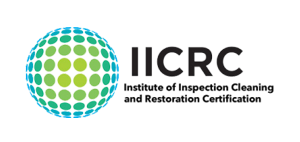Mold is a common household problem that can have serious health consequences if left unchecked. Prevention is key to ensuring a healthy living environment for you and your family. With these expert mold prevention tips, you can effectively combat this issue and create a mold-free home.
Mold is not only unsightly but can also cause respiratory problems and allergies. By implementing the following strategies, you can prevent mold growth and maintain a healthier home:
Key Takeaways
- Moisture control is crucial in preventing mold growth.
- Proper ventilation and air circulation can reduce humidity and prevent mold formation.
- Regular cleaning and maintenance can help keep your home mold-free.
- Identifying common mold prone areas in your home and taking proactive measures can prevent mold from becoming a problem.
- Understanding the basics of mold and its potential health effects is important for effective prevention.
Understanding Mold and Its Health Impacts
Before you can effectively prevent mold growth in your home, it’s crucial to understand the basics of mold and its potential health effects. Mold is a type of fungus that thrives in warm and humid environments. It reproduces by releasing spores into the air, which can then be inhaled by humans and animals.
Exposure to mold can cause a range of health problems, especially for those with allergies, asthma, or weakened immune systems. Common symptoms of mold exposure include:
- Coughing and wheezing
- Nasal and sinus congestion
- Sore throat
- Eye irritation
- Skin irritation
In some cases, mold exposure can also lead to more severe health problems, such as respiratory infections and neurological issues.
It’s important to note that not all molds are harmful, and not all people react to mold in the same way. However, if you suspect that you have mold in your home, it’s best to err on the side of caution and take steps to remove it.
Now that you understand the potential health impacts of mold, let’s move on to identifying common mold prone areas in your home.
Identifying Common Mold Prone Areas in Your Home
Mold can grow in any damp or humid area, but some parts of your home are more prone to mold growth than others. By identifying these common areas, you can take proactive measures to prevent mold from becoming a problem.
| Common Mold Prone Areas | Why They Are Prone to Mold Formation |
|---|---|
| Bathroom | The bathroom is the most humid area in your home due to showers and baths. It also has poor ventilation, which creates a moist environment that is perfect for mold growth. |
| Kitchen | Cooking, washing dishes, and using the dishwasher create moisture in the air. In addition, food spills and crumbs provide a food source for mold. |
| Basement | Basements are known for being damp and poorly ventilated. Moisture can seep in through walls and floors, and mold can grow on any organic material, including wood, carpet, and cardboard boxes. |
| Attic | Attics can be humid due to poor ventilation and roof leaks. In addition, insulation can trap moisture, creating a breeding ground for mold. |
| Crawl Space | Crawl spaces are often damp and poorly ventilated, providing a perfect environment for mold. Mold can grow on wood, insulation, and any other organic materials in the crawl space. |
By recognizing these common mold prone areas, you can take steps to prevent mold growth in your home. In the next section, we will explore effective moisture control techniques to keep these areas dry and mold-free.
Proper Moisture Control Techniques
Moisture is a primary factor that contributes to mold growth. As we discussed in the previous section, mold thrives in damp environments. Therefore, controlling moisture is crucial in preventing mold growth in your home. In this section, we will explore effective moisture control techniques to help keep your home dry and mold-free.
Here are some moisture control techniques to consider:
- Fix leaks – Leaks provide a constant source of moisture, making them perfect breeding grounds for mold. Be sure to fix any leaks promptly.
- Use exhaust fans – Whenever you’re cooking or taking a shower, use the exhaust fans to control moisture levels in your home.
- Keep humidity levels below 60% – High levels of humidity can promote mold growth. Use a dehumidifier to maintain optimal humidity levels in your home.
- Insulate pipes and windows – Insulation can help prevent condensation, which is a source of moisture.
- Ensure proper ventilation – Good ventilation is key to keeping your home dry. Ensure that attic spaces and crawl spaces are properly ventilated.
By implementing these moisture control techniques, you can help prevent mold growth in your home. Remember, mold can be a serious health hazard, and prevention is the key to a healthier living space.
Ventilation and Air Circulation Tips
Good ventilation and air circulation are essential for preventing mold growth in your home. By improving the airflow throughout your home, you can reduce the moisture levels that mold thrives on. Here are some practical tips to improve ventilation and air circulation in your home:
- Open windows and doors: Opening windows and doors allows fresh air to enter your home, improving air quality and reducing humidity.
- Use exhaust fans: Exhaust fans in your kitchen and bathroom can remove excess moisture and prevent mold growth.
- Increase airflow: Using fans and keeping interior doors open can increase airflow and improve ventilation.
- Regularly replace air filters: Dirty air filters can reduce air quality and increase humidity levels, so be sure to replace them regularly.
Pro Tip: If you live in an area with high humidity, consider investing in a dehumidifier to keep the air dry and prevent mold growth.
By following these ventilation and air circulation tips, you can improve your home’s air quality and prevent mold growth. Remember, prevention is key to creating a healthy living environment for you and your family.
Cleaning and Maintenance Practices for Mold Prevention
Regular cleaning and maintenance are crucial for preventing mold growth in your home. Here are some effective cleaning techniques and maintenance practices that you can implement to keep mold at bay:
Clean up any spills or leaks immediately: It only takes 24-48 hours for mold to develop in damp areas. If you notice any leaks or spills, clean them up immediately to prevent moisture from lingering.
Keep your home dry: Moisture is a primary factor that contributes to mold growth. Use dehumidifiers in damp areas like basements and crawl spaces to control the humidity levels. Make sure to fix any leaks in your plumbing, roof, or walls to keep your home dry.
Use mold-resistant products: When renovating or remodeling your home, use mold-resistant products like drywall, paint, and insulation. These products can help prevent mold growth in the long run.
Clean and maintain your HVAC system: Regularly clean and replace the filters in your HVAC system to prevent mold from spreading throughout your home. Hire a professional to inspect and clean your system annually.
Regularly clean visible mold: If you see any mold growth, clean it up immediately with a solution of bleach and water. Wear protective gear like gloves and a mask to avoid inhaling mold spores.
Monitor humidity levels: Keep an eye on the humidity levels in your home, especially in areas prone to dampness. You can use a hygrometer to measure the humidity levels and adjust accordingly.
Inspect and maintain your home: Regularly inspect your home for any signs of mold growth, especially in the common mold prone areas we discussed in section 3. Take proactive measures to address any issues before they become more severe.
Remember, prevention is key when it comes to mold. By implementing these cleaning and maintenance practices, you can keep your home mold-free and create a healthier living environment for you and your family.
Conclusion
By following these expert mold prevention tips, you can safeguard your home from mold growth and create a healthier living space. Remember, prevention is always better than dealing with the consequences of mold infestation. Take proactive measures, implement the strategies you’ve learned, and enjoy a mold-free environment for years to come.
FAQ
What are some expert mold prevention tips for a healthier home?
There are several expert tips to effectively prevent mold growth in your home. Some key strategies include controlling moisture, improving ventilation, and implementing regular cleaning and maintenance practices.
Why is it important to understand mold and its health impacts?
Understanding mold and its potential health effects is crucial in order to take necessary precautions. Mold exposure can lead to respiratory issues, allergies, and other health problems, so it is important to be aware of the risks.
What are some common mold prone areas in a home?
Common mold prone areas in a home include bathrooms, kitchens, basements, and areas with poor ventilation or high humidity levels. It is important to identify these areas and take preventive measures to avoid mold growth.
How can I effectively control moisture in my home to prevent mold?
Proper moisture control techniques include fixing leaks and water damage promptly, using dehumidifiers in humid areas, ensuring proper insulation and ventilation, and regularly inspecting and cleaning gutters and downspouts.
What can I do to improve ventilation and air circulation in my home?
To improve ventilation, you can open windows and use fans to promote air circulation. Additionally, installing exhaust fans in bathrooms and kitchens, using air purifiers, and keeping furniture away from walls can enhance airflow and reduce the risk of mold growth.
Are there specific cleaning and maintenance practices that can help prevent mold?
Yes, regular cleaning and maintenance are vital for mold prevention. Some practices include promptly drying wet surfaces, regularly cleaning and disinfecting bathrooms and kitchens, regularly inspecting and maintaining HVAC systems, and keeping indoor humidity levels below 60 percent.







